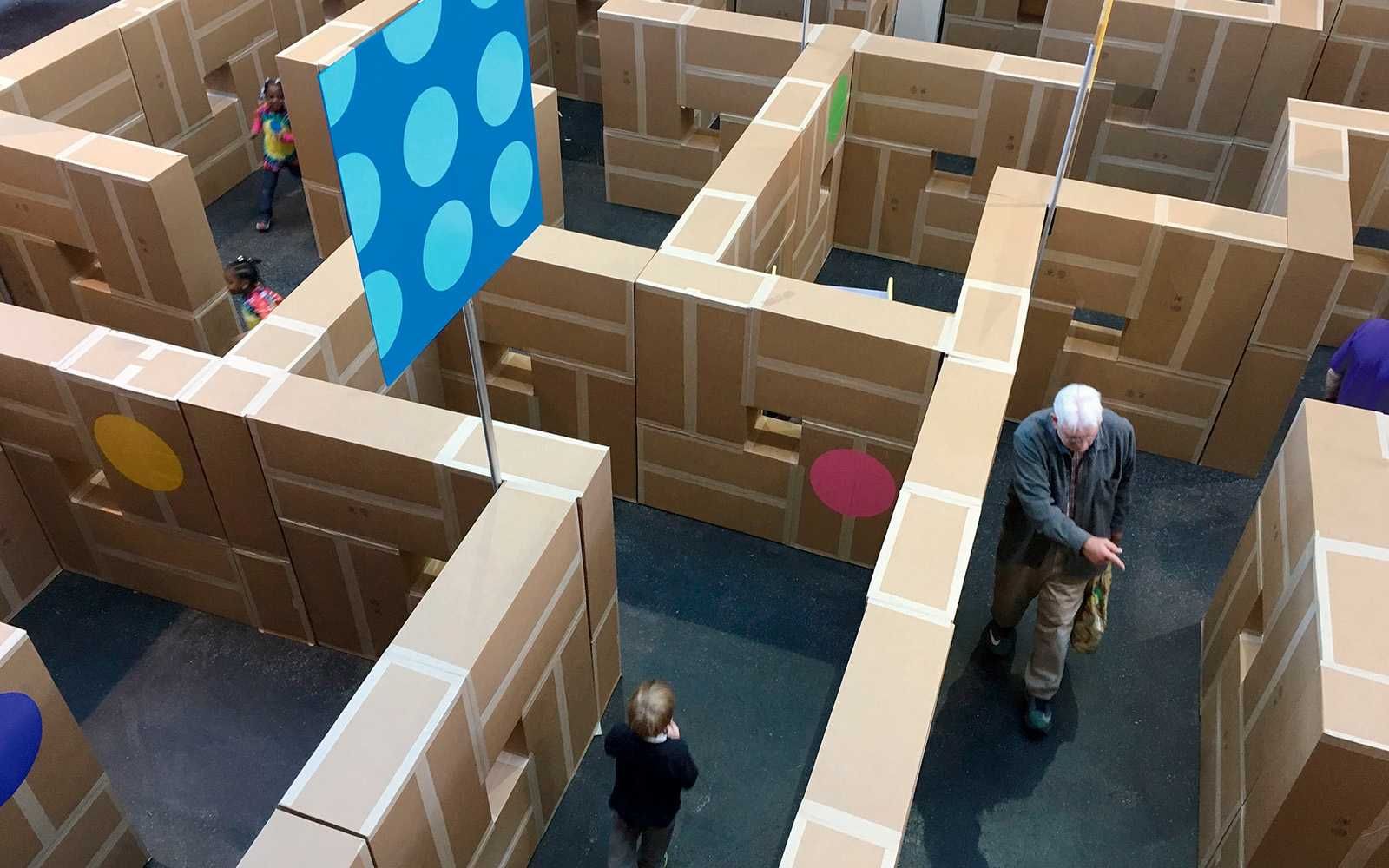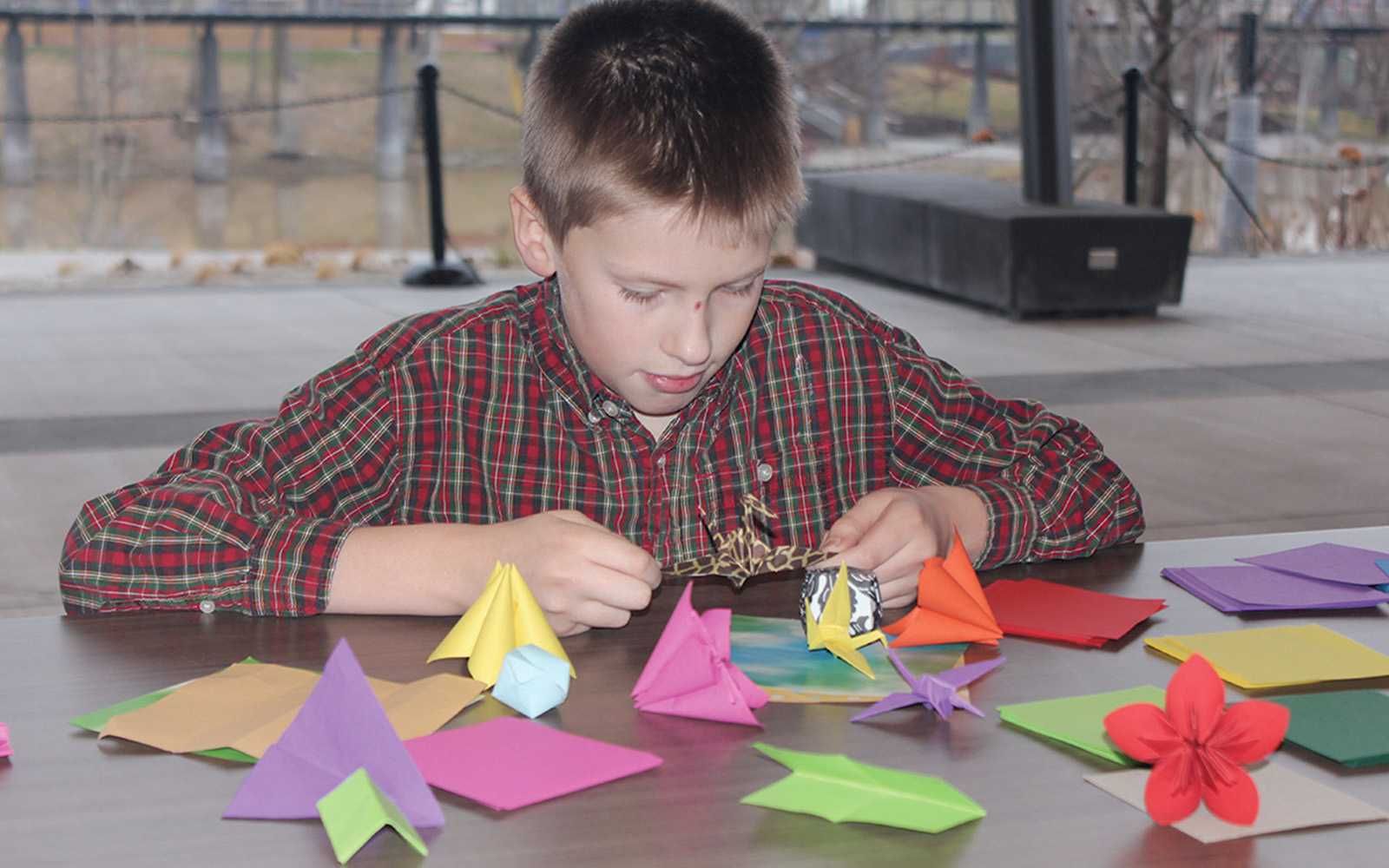In addition to the permanent exhibits and hands-on interactive activities, Science Central brings in three traveling exhibits each year. Last fall saw the timely Apollo 11 exhibit which allowed visitors — most of whom weren’t even born for that historic moment 50 years ago — to relive and understand the science behind that remarkable achievement.
This spring brings something entirely different, an exhibit which will be both familiar and new.
For kids and adults alike
A-MAZE-D, the brainchild of maze expert Dave Phillips, will allow kids and adults alike a chance to navigate through some unusual configurations created by assembled boxes.
Martin Fisher, executive director of Science Central, knew when he first saw Phillips’s work that it would fit nicely into the mission of Science Central.
“When we’re looking at traveling exhibits, we want anything related to science,” Fisher said. “That can be physical science, applied science, or natural science, and it has to be hands on. We are not a science museum, we’re a science center, and that’s important. Museums are collections of things that you can look at but not touch. A science center has exhibits you can interact with, and we like to bring in a variety and not have two in a row that are the same.
“This exhibit is more applied science with a lot of math and logic involved. When I first saw this exhibit, I saw it was something more than just entertainment and went into the educational realm. I was intrigued.”
A Gift For making Mazes
Phillips began his fascination with mazes as a very small boy, gradually taking his skills to building increasingly more sophisticated mazes. Since there seemed little practical way to make a career of mazes, so he turned his attentions to commercial art and illustration.
But as computer games came into vogue, Phillips turned toward designing games, moving from company to company, finally able to put his gift for mazes to use.
“Then corn mazes started popping up a lot,” Phillips said. “The first one was in 1993, and it was designed by Adrian Fisher. Then one day I was waiting in line at Walmart, and I saw someone wearing a Maize Quest jacket and asked about it. I found out that Maize Quest designed corn mazes, and I started doing a few mazes for them. I ended up doing 75 corn mazes in the United States and Canada and one in England. It just grew from there and was pretty stable by 1999.”
Phillips moved into other areas of mazes as well, working with tires, bamboo, and hedges as he experimented with other maze materials and configurations. Eventually he turned his eye toward making mazes for museums and places like Science Central.
“I always wanted to do a maze for exhibits for museums, something that would last four or five years,” Phillips said. “The first one was in Wilmington, Delaware, and I put it together with used boxes. They were all different sizes so it was a lot of work. I realized that that took too much time.”
Instead Phillips moved to boxes he designed to be more uniform in their application. He was able to construct the mazes in a couple of days with the help of four to five volunteers.
Lots of planning
The maze he brings to Fort Wayne is his fifth in this design, and he knows that for an interactive exhibit made from something less sturdy than corn requires some planning.
“When I’m putting it together, I think to myself, ‘How can a kid break this? How can he abuse it?’ I’m deliberate about designing it so it can take that.”
Phillips wants visitors to do more than work their way through the maze and actually come away feeling that they can build a maze, too. The maze that visits Science Central through Memorial Day weekend will have interactive elements while still allowing people to get lost, as Phillips said, “in a good way.”
“There’s a game in there so little kids can run around and look through holes and see people, areas one foot by one foot that they can climb through. There are four stations so they can make a rubbing, and there’s an activity puzzle. It’s not a corn maze. It’s finite. It’s more of a trail maze where you get to the center and then find your way out again.”
While it took a few years for Phillips’s maze expertise to become his career, it has taken hold in a major way. In addition to more than 50 maze books and his many mazes he’s designed for people to enjoy, he also designed an Aerosmith CD cover and a maze for Steven Spielberg’s film The Haunting.
Martin Fisher thinks the exhibit, which officially opens Jan. 18, will provide both fun and learning for those who visit Science Central.
“We’ll do a soft opening a few days before to test it out, see what might need to be moved,” Fisher said. “And visitors should know that the exhibit is included with admission to Science Central, so there’s no additional fee for visiting the maze exhibit. It’s all part of a visit to the center.”
 Submit Your Event
Submit Your Event



